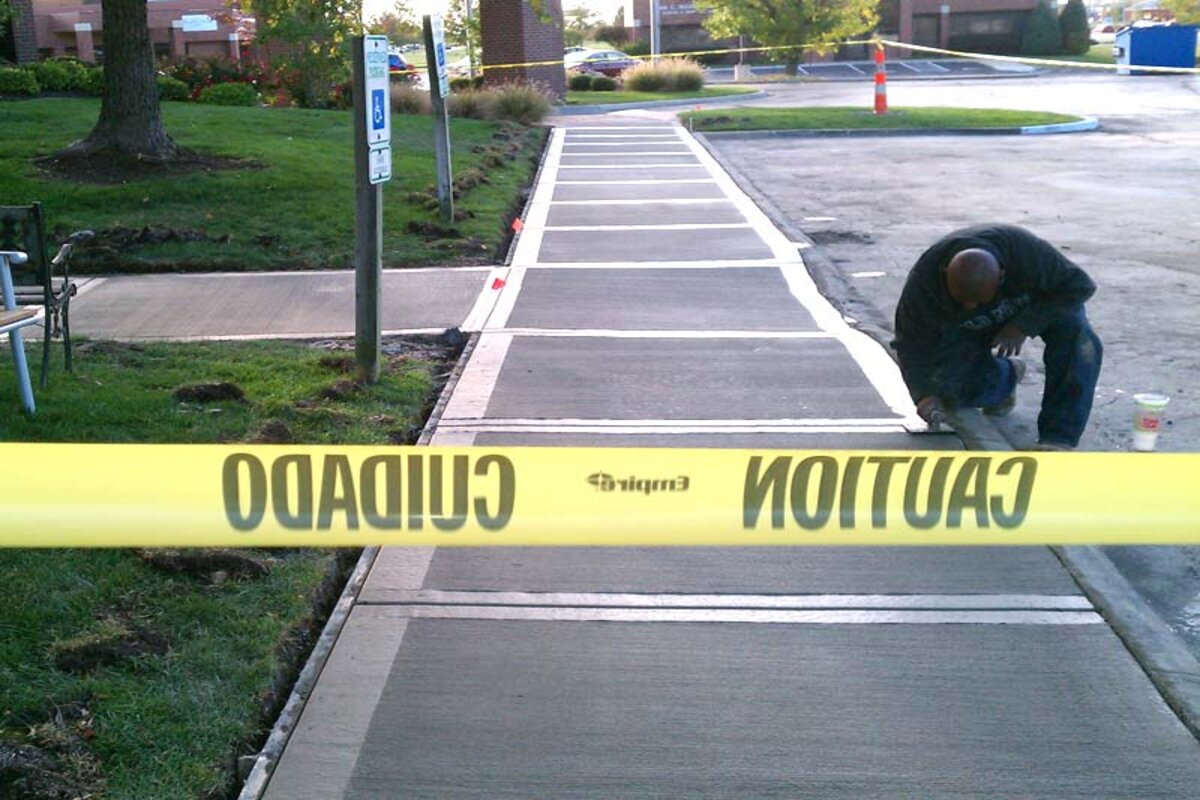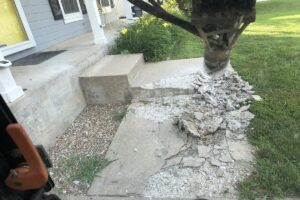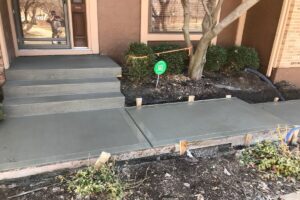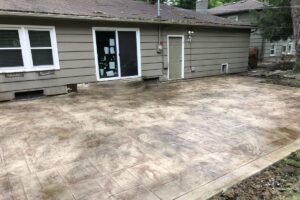If you’re unsure whether your sidewalk needs to be replaced or not, it’s helpful to be aware of the signs indicating you need a new sidewalk. Fortunately, the signs that you need a sidewalk replacement are pretty easy to spot as long as you know what to look for.
Some causes of sidewalk damage can be avoided. However, others are unavoidable because of weather elements and the location of the sidewalk.
Severe Dulling And Discoloration
One sign that you need to replace your sidewalk is severe dulling and discoloration. When your sidewalk is initially installed, its appearance is bright and clean and free of any dark marks.
However, over time, your sidewalk’s color diminishes, looks dull, or appears dirty despite a recent resealing or cleaning. All of these signs indicate you should look into replacing your sidewalk soon.
A Sunken Sidewalk Needs To Be Replaced
If panels of your sidewalk have started to lower or rise compared to the other panels, your sidewalk is most likely an older one and needs to be replaced. Uneven sidewalks aren’t only a sign of structural damage but are also unsafe for foot traffic.
Fortunately, if just one part of your sidewalk is even, you may be able to replace a single panel and not the entire sidewalk. Regardless, a sunken sidewalk needs to be replaced as soon as possible.
Fissures, Divots, and Cracks
Another obvious sign that you must replace your sidewalk is the presence of divots, potholes, fissures, and cracks. As your sidewalk breaks down as it ages, these structural damages are often present.
Of course, if there is a single crack in your sidewalk, it usually isn’t grounds for an entirely new sidewalk. However, numerous potholes and cracks indicate it’s time to replace the sidewalk.
Even with the proper maintenance techniques, cracks can appear on a sidewalk. Sometimes this kind of damage occurs because of the soil beneath the sidewalk shifts. Other times divots, cracks, and fissures appear because the sidewalk experiences heavy foot traffic.
What Causes Cracks In A Sidewalk?
There are numerous factors that cause cracks in sidewalks. For instance, if the top layer of concrete dries significantly quicker than the bottom layers, it can cause cracks. Typically, these cracks happen if the sidewalk concrete is poured on a hot sunny day or a windy day.
Another reason cracks develop in your sidewalk is from settling. If there’s digging nearby or new construction, the soil beneath your sidewalk shifts, causing cracks. Additionally, growing tree roots can cause the soil to shift and eventually crack your sidewalk.
Moreover, expanding concrete can eventually cause cracks. Because concrete is porous and absorbs moisture, it expands when the material heats up. As a result, cracks develop while the concrete expands.
Unfortunately, poor concrete installation can also cause cracks, which is why it’s so important to hire professionals that pour concrete correctly. A poor cement mix with too much or not enough water is susceptible to frequent cracks.
Lastly, if a sidewalk endures heavy foot traffic or bears a lot of weight, it will crack sooner than other areas of the sidewalk. Most of the things that cause sidewalk cracks are unavoidable. But the number one thing you can control is proper concrete pouring and installation.
Contact Experts When Your Sidewalk Needs To Be Replaced
There are a handful of obvious signs that you must replace your sidewalk. For example, the following reasons are grounds to get a new sidewalk:
- Several cracks, divots, or other structural damages
- The sidewalk is sunken or uneven
- The color is considerably dull and discolored
Replacing a sidewalk is a detail-oriented job that is best suited for a team of experts with years of experience. That said, contact our team at Johnson Concrete if your sidewalk needs to be replaced, and we’ll get the job done right!




